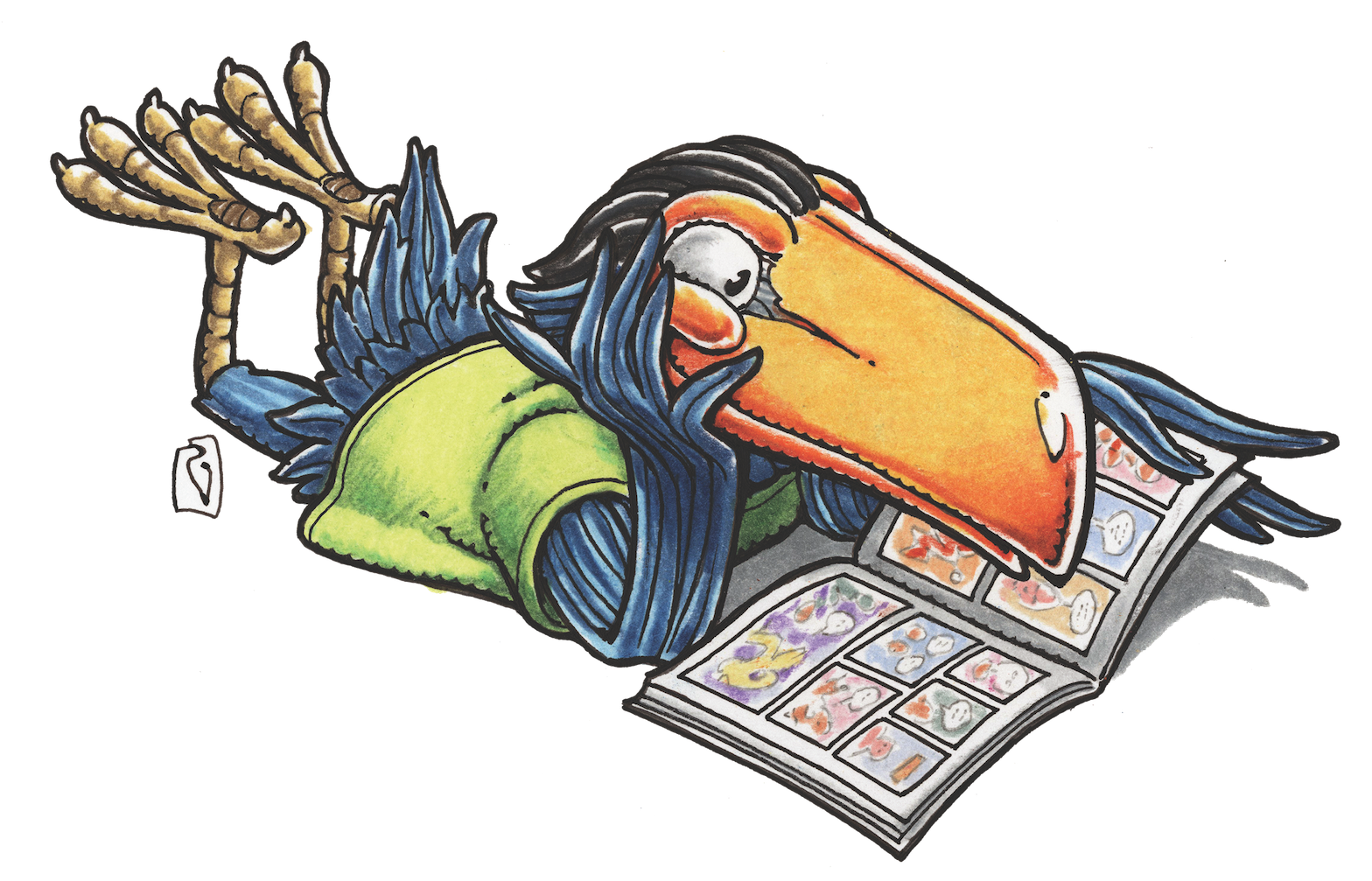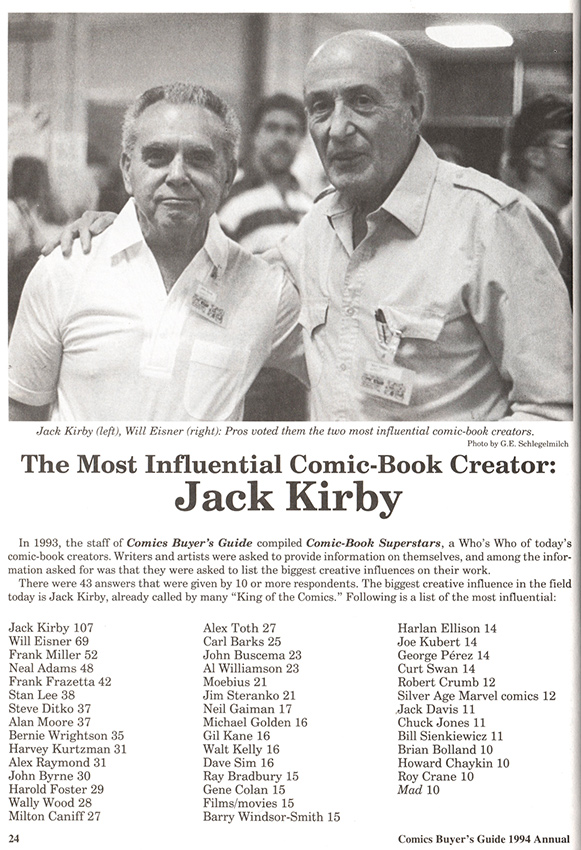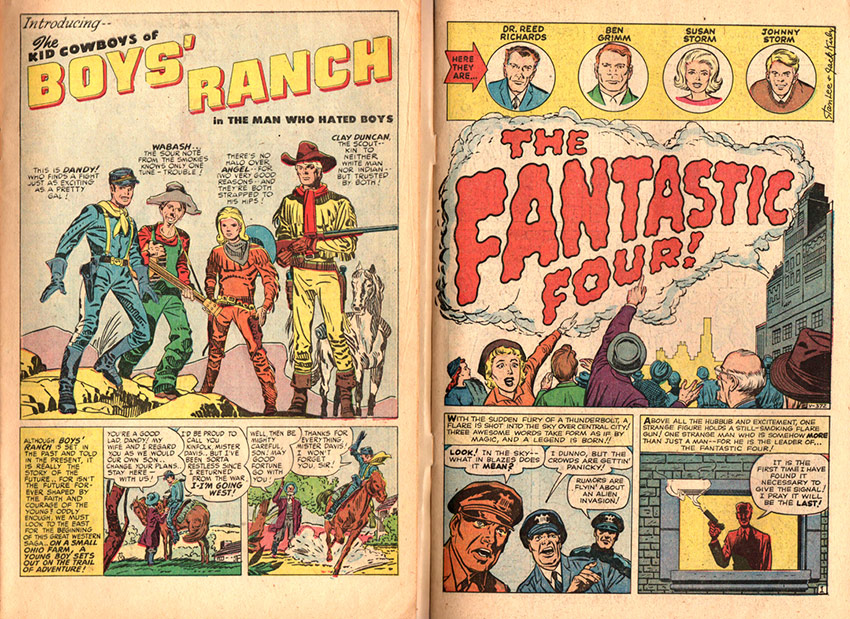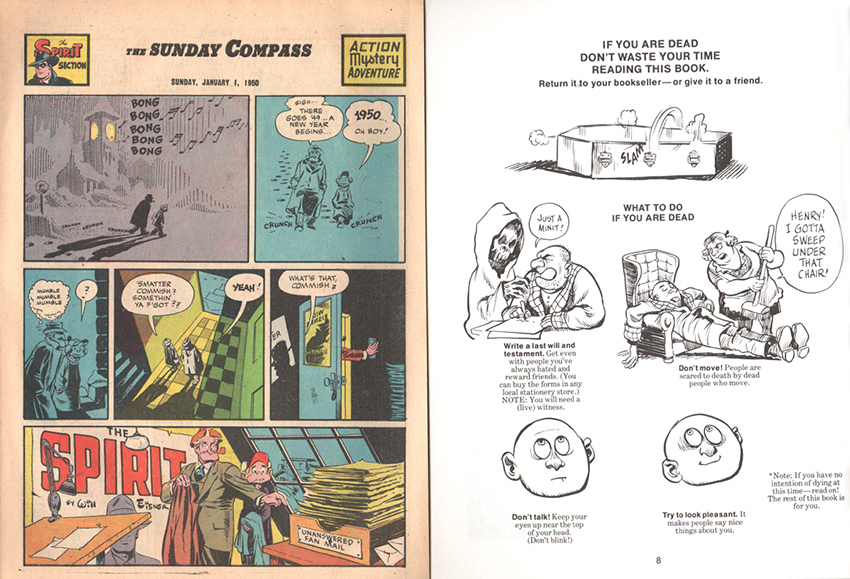MAGGIE’S WORLD BY MAGGIE THOMPSON
Maggie’s World 049: Influences


When my late husband, Don, and I were working at Krause Publications, we received many requests to be put in touch with professionals—many of whom were reluctant to share contact information. So we decided to kill the proverbial two birds with one stone and prepared a book, Comic-Book Superstars, that would also provide us with information at a glance. In addition to other data, we asked participants to list their biggest creative influences.
We added up the responses for the Comics Buyer’s Guide Annual we prepared the next year and found—well, take a look. (And here’s a shout-out to the wonderful photographer G.E. Schlegelmilch for supplying the photo we used in that summary.)
Who turned out to be the two most important creators in the lives of comics pros of the 1990s? As I say, take a look.
Jack Kirby was born Jacob Kurtzberg on August 28, 1917. [He died February 6, 1994, at the age of 76; his wife, Roz, was born September 25, 1922, and died December 22, 1997.]
Will Eisner was born William Erwin Eisner on March 6, 1917. [He died January 3, 2005, at the age of 87; his wife, Ann, was born April 26, 1923, and gives her name to the Will & Ann Eisner Foundation, created to assist education in comics and sequential art.]
2017, of course, marks the century since the birth of two greats of comic-book history.
Jack Kirby
Influential creators had influences of their own. Mark Evanier reported in Kirby: King of the Comics that important influences on Jack’s work included those of Rollin Kirby (editorial cartoonist, 1875-1952), “Ding” Darling (editorial cartoonist, 1876-1962), C.H. Sykes (editorial cartoonist, 1882-1942), Hal Foster (Prince Valiant comic-strip artist-writer, 1892-1982), Milton Caniff (Terry and the Pirates and Steve Canyon comic-strip writer-artist, 1907-1988), and Alex Raymond (Flash Gordon and Rip Kirby comic-strip artist-writer, 1909-1956).

For Don and me, though, Jack’s work was just … well … always there from the time we first began to read comic books. Frankly, we pretty much took his work for granted. He seemed to be everywhere; whereas he’d co-created Captain America, he certainly wasn’t just about super-heroes. (Keep in mind the artists whose work influenced him.) When Don and I first began to discuss our favorite comics, we shared our enthusiasm for the short-lived Boys’ Ranch, a Western that featured a terrific team of teens: perhaps our favorite of his pre-Silver Age work. It may not have influenced many of those who came later, but those who had followed the series tended to admire it the way we did.
Though Jack was acknowledged to be one of the most vital influences in the entire comic-book field, one of the most impressive aspects of “The King of Comics” was his kindness toward all his admirers. He communicated with them, he connected with them, he welcomed them as his friends, and he went out of his way to be the guiding light that illuminated the lives of so many.
And, not so by the way, the same goes for Roz Kirby, who put up with what must have been an overwhelming mass of adults and kids who each yearned for their own moment with someone who meant so much to them. She made it possible for him to give us his best—and her easy accommodation of adoring acquaintances made us feel that we weren’t an annoyance, even as she saw to it that he was able to work despite our distractions. (Somewhere in my files is a charming photo for which she posed for me with Jack: smiling and relaxed, as she made traditional “bunny ears” behind his head.)
Will Eisner
Will shared with us for Comic-Book Superstars a list of creators who had been among the greatest influences on him. They were J.C. Leyendecker (illustrator, 1874-1951), George Herriman (Krazy Kat comic-strip writer-artist, 1880-1944), Elzie Segar (Thimble Theatre comic-strip writer-artist, 1894-1938), and Milton Caniff (Terry and the Pirates and Steve Canyon comic-strip writer-artist, 1907-1988). Even before that, he had said, “My big influence in stories … is the short stories—the O. Henry short stories, the Ambrose Bierce short stories, and so forth.”

Although I wrote “Blue Suit, Blue Mask, Blue Gloves—and No Socks” about The Spirit for 1973’s The Comic-Book Book, I hadn’t grown up reading his stories. I discovered the feature thanks to Don’s enthusiasm—and our quickly growing accumulation of back-issue comics. I wrote the piece primarily based on the Spirit sections we’d managed to acquire in the preceding decade, not from having met Will. I commented, “People have pointed out that the Spirit never wore socks; the leg that showed between cuff and shoe was almost invariably colored ‘flesh’ in those old sections.” We supplied Will with a copy of the book, and his response was to send us a wonderful picture suitable for framing—which, of course, we did. It was The Spirit saying, “What do you mean, ‘No socks’…?! … That was the work of an assassin in the engraving plant … abetted by Jules Feiffer who spread the rumor!! Grrrrr.”
I think the first time we met Will, it was at a convention in Chicago, where he was joined by Andre LeBlanc (of whom, in case you don’t recognize the name, Alex Toth was a fan). Will and Andre answered questions from fans and took their admirers behind the scenes of the studio system that produced The Spirit on a weekly basis.
Will’s fascination with the new economy of comic-book production and distribution quickly brought him into contact with his admirers: a contact that led to ever-more-productive re-involvement with the field. And we all profited, as he found a new audience and his fans were able to explore the output of this authentic genius.
Will worked with Denis Kitchen to produce new projects—and never lost sight of the possibilities of the growing direct market of comics shops. In fact, as the industry increasingly recognized the excellence of his work, he continued to look for ways to improve the quality of the field.
H.T. Webster (1885-1952) used to do a panel titled “The Thrill That Comes Once in a Lifetime,” and one of ours came at a long-ago trade show. As I remember it, Don and I had just left the restaurant where we’d eaten breakfast, when Will walked up and asked if we’d join him for breakfast. Would we? Wow. Why the invitation? It was because Will wanted to brainstorm how creators could help comics shop owners. There had been awards for creators’ work. Couldn’t there also be awards for the professionals who supplied that work to its audience?
Will Eisner wanted our opinion? We’d helped to create Krause Publications’ Comics Retailer magazine in 1992. But, though Will’s idea was, of course, a terrific one—we’d have never come up with it on our own. It was Will who understood the way the field worked, because he studied what he didn’t understand—until he understood it.
Professionals in the industry had long been celebrated in the annual awards named for Will, starting as long ago as 1988. It was in 1993 that his goal of supporting shop owners was realized, when the Will Eisner Spirit of Comics Retailer Award was first awarded to honor comics retailers around the world. It continues to be awarded at Comic-Con each year.
Lessons Learned
It’s one thing to have talented professionals who make our lives better by entertaining us.
It’s even better when talented professionals reward fans by reaching out to make us feel that we matter to them.
Just as Jack Kirby and Will Eisner were influenced by those who came before them, they were the best possible influences on those who came after them.
Who will be honored as influences a century from now? I hope they’ll be as worthy of it as Jack and Will.
Maggie’s World by Maggie Thompson appears the first Tuesday of every month here on Toucan!